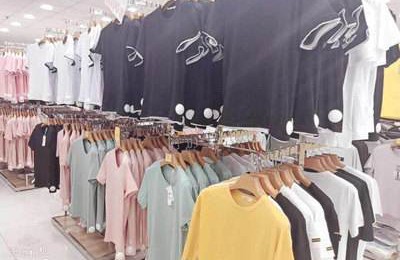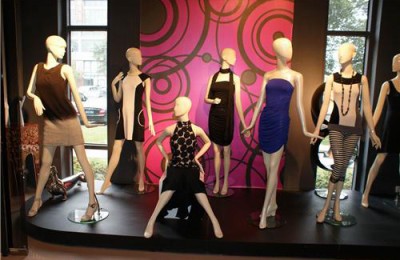Here are the “100,000 Whys” of textiles, and the Textile Science and Technology Museum of Wuhan Textile University is unveiled
Basalt stone can be spun into silk, artificial blood vessels can be used in the health field, and a “hat” on the chimney can filter exhaust gas and waste residue… These magical “sharp eyes” – “one hundred thousand” in the textile industry Why?” The answers were revealed one by one at the Textile Science and Technology Museum of Wuhan Textile University, which was officially opened on March 21.
The Textile Science and Technology Museum of Wuhan Textile University, covering an area of 2,000 square meters, is full of “gold”. It displays the history and development of textiles from six sections: Textile Origin, Traditional Textile, Modern Textile, Big Textile, Super Textile, and Future Textile. technology and culture.
“Every section has its own merits, many of which are closely related to life.” said Guo Qingfeng, deputy director of the school’s Technology Research Institute. On March 21, after a short 11-minute opening ceremony of the Textile Science and Technology Museum of Wuhan Textile University, the leaders, teachers, and students who visited the site carefully watched each section and took out their mobile phones to take photos and freeze frames from time to time.
In front of a rock, Guo Qingfeng pointed at the rock and asked the visiting students: “Can you imagine that the rock can ‘pull out’ fibers?” Hu Qiushi, a 2020 computer student at Wuhan Textile University, opened his eyes wide: “This is too subversive. It’s just my imagination!”
“Basalt fiber.” Guo Qingfeng said that experts from Wuhan Textile University cooperated with Hubei Huierjie Company to use special technology to melt the basalt material at 1500°C and then draw it through a platinum-rhodium alloy drain plate at high speed. The whole process does not have any It is additive-free, has no waste gas or waste liquid, and degrades into soil matrix after landfill without any harm. It is listed as a new strategic “green material” in the 21st century. Basalt fiber has the characteristics of heat insulation, insulation, high temperature resistance and corrosion resistance. It is used in emergency protection, fire rescue, navigation and aviation and other fields. This is the result of technology in the textile industry. “What are the characteristics of materials and what fields are they used in… Our experts are also constantly innovating.”
Artificial blood vessels made of special fibers also bring good news to human health. A 64-year-old man underwent surgery at the Fuwai Hospital of the Chinese Academy of Medical Sciences at the end of 2020 due to a giant abdominal aortic aneurysm combined with bilateral internal aneurysms. The artificial blood vessel used in the operation is a polyurethane artificial blood vessel developed by Xu Weilin, a professor at Wuhan Textile University, after fifteen years of research and development. This artificial blood vessel also fills the gap in my country’s lack of independent research and development of artificial blood vessels.
Standing in front of the popular science display of artificial blood vessels, Hu Qiushi and his classmates threw out “One Hundred Thousand Whys” to Tu Yaowei, Secretary of the Party Committee and Dean of Wuhan Textile University Technology Research Institute, Guo Qingfeng, Vice Dean and others. Questions: “Where do the materials for artificial blood vessels come from?” “Are there any side effects of artificial blood vessels?” “How long is the lifespan of artificial blood vessels?” “With artificial blood vessels, can we develop artificial skin in the future?”…
“Solving and answering the ‘hundred thousand whys’ of textiles has always been the research direction of our textile people.” Guo Qingfeng said with a smile that there are too many high-tech “sharp eyes” in the Textile Science and Technology Museum, like they can add to the chimney By ‘wearing a hat’, you can filter out exhaust gas and waste residue. The fibers studied by Master Spang are at work in the ‘hat’, and there are also seemingly ordinary camouflage clothing ‘invisibility cloaks’ that cannot be detected by infrared rays when worn on the body.
Textiles change the world. Tu Yaowei introduced that textiles are no longer just traditional fabrics in the simple sense. With the development of textile technology, textiles have covered various industries such as security and defense, water conservancy and environment, communications, construction, and civil engineering.
As the only university in China named after “Textile”, Professor Xu Weilin, academician of the Chinese Academy of Engineering and president of Wuhan Textile University, said at the opening ceremony that the Textile Science and Technology Museum of Wuhan Textile University should tell the story of “Chinese Textile” well, in addition to promoting school-enterprise Through cooperation, we will also organize extensive visit activities to provide the public with high-quality and convenient science public services to the greatest extent, and become a good platform to inspire young people to learn scientific knowledge, feel the charm of textiles, and enlighten scientific wisdom, so as to achieve mutual promotion and integrated development of science and technology and education. , go hand in hand.
AAA
Disclaimer:
Disclaimer: Some of the texts, pictures, audios, and videos of some articles published on this site are from the Internet and do not represent the views of this site. The copyrights belong to the original authors. If you find that the information reproduced on this website infringes upon your rights, please contact us and we will change or delete it as soon as possible.
AA







